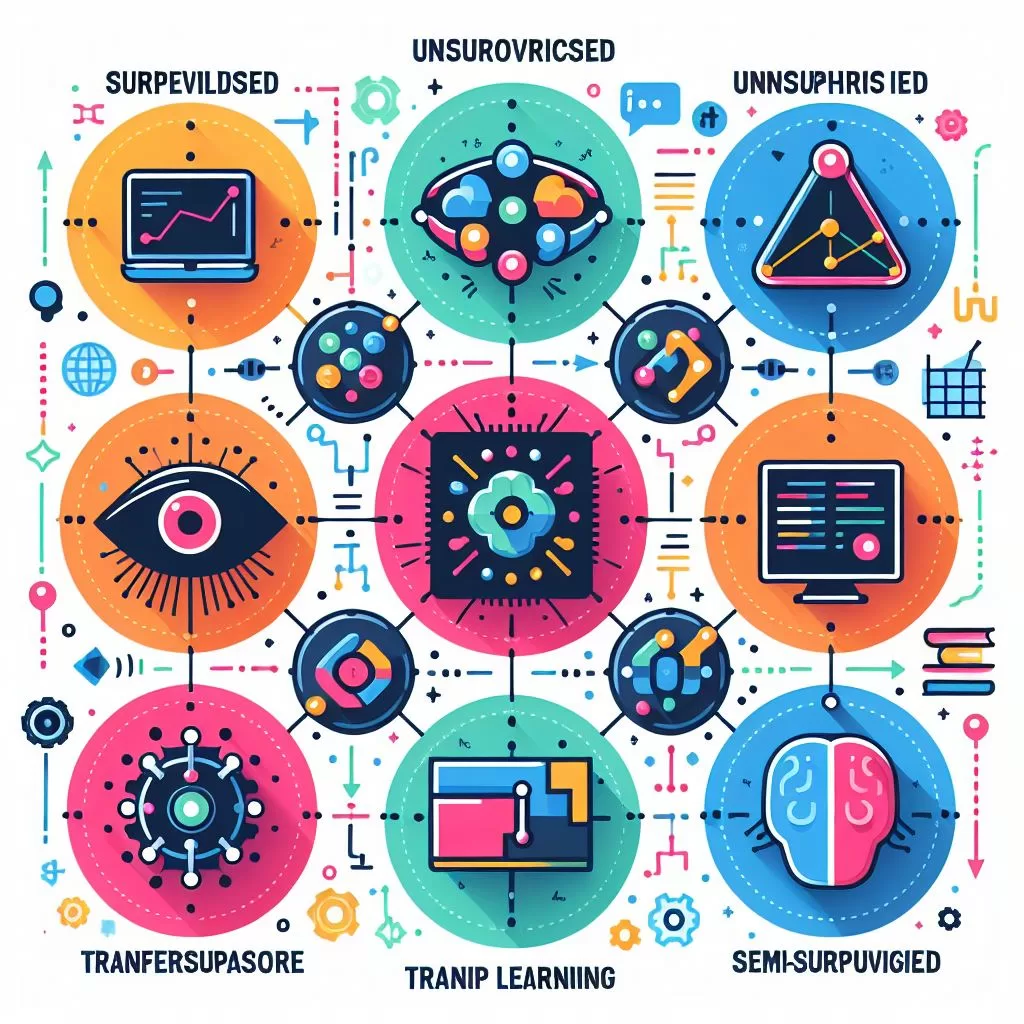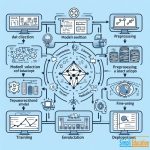Machine learning can broadly be categorized into three main types based on the learning style and nature of the training data:
1. **Supervised Learning:**
– In supervised learning, the algorithm learns from labeled data, meaning the input data is accompanied by the correct output.
– The algorithm then learns to map the input to the output, making predictions or decisions based on new unseen data.
– Examples include classification (assigning labels to instances) and regression (predicting continuous values).
2. **Unsupervised Learning:**
– Unsupervised learning involves training algorithms on data without labeled responses.
– The algorithm learns patterns and structures from the data without explicit guidance.
– Clustering (grouping similar instances together) and dimensionality reduction (reducing the number of features while preserving essential information) are common unsupervised learning tasks.
3. **Reinforcement Learning:**
– Reinforcement learning involves an agent learning to interact with an environment to achieve a goal.
– The agent learns to make decisions by taking actions and receiving feedback from the environment in the form of rewards or penalties.
– It aims to learn a policy, which is a mapping from states of the environment to actions to maximize cumulative rewards over time.
Additionally, there are some hybrid approaches and specialized types of machine learning, such as:
4. **Semi-supervised Learning:**
– Semi-supervised learning lies between supervised and unsupervised learning, utilizing a small amount of labeled data combined with a large amount of unlabeled data.
– It aims to improve the learning accuracy of models in scenarios where labeled data is expensive or difficult to obtain.
5. **Self-supervised Learning:**
– Self-supervised learning tasks involve generating supervisory signals from the input data itself, rather than relying on externally provided labels.
– Examples include pretext tasks like predicting missing parts of an image or reconstructing the input from corrupted data.
6. **Deep Learning:**
– Deep learning refers to the subset of machine learning techniques that utilize neural networks with many layers (deep architectures) to learn hierarchical representations of data.
– It has shown remarkable success in various domains, including computer vision, natural language processing, and speech recognition.
7. **Online Learning:**
– Online learning involves updating the model continuously as new data becomes available, rather than in batches.
– It is suitable for scenarios where data arrives sequentially, and the model needs to adapt to changing patterns over time.
These categories are not mutually exclusive, and there can be overlap or combinations of different approaches depending on the specific problem being addressed.



